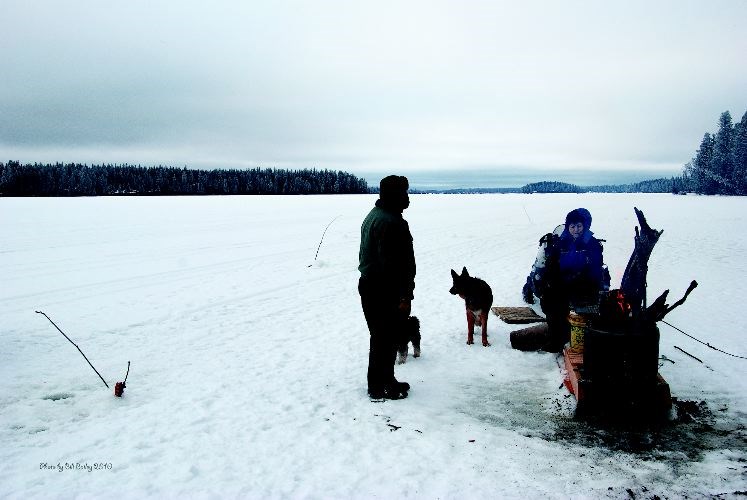Just because the mercury has dropped and the lakes are no longer in their traditionally fluid form doesn't mean it's time to put away the fishing gear.
Though the local fishing holes are not quite ready for the activity, ice fishing is a time-honoured winter tradition that doesn't need as many trappings as fishing in the warmer seasons.
For some, ice fishing is a chance to get outdoors, hang out with friends and enjoy some form of warming beverage. For others, it can be a chance to show off the latest, and newest toys.
Once the water has turned into a few inches of ice, winter anglers occupy spots such as Eena, Cluculz, Vivian and Shane Lakes and can pick up fish in less than two metres of water.
While ice fishing doesn't need as many trappings as fishing in the warmer seasons, it still requires specialized gear.
First and foremost is the fishing rod, which are much shorter than the traditional poles.
"You don't want a big fishing rod," said Mary Ann Funk of Northern Trout Fitters, which has a supply of the poles and other ice fishing trappings. Equipment can also be found at places such as Canadian Tire and Northern Hardware.
Formal rods can easily be replaced with a tree branch, said angling enthusiast Bill Bailey.
"I still know people who grab a willow branch and drop a stick down the hole," Bailey said.
For those who want more modern equipment, the shorter, 24- to 28-inch rods are still very affordable, with prices starting at around just $10. Attached to those lines
But paramount to the sport is an auger, as there's no ice fishing unless there's a hole in the ice. The hand or motorized tools create holes averaging 20 centimetres in diameter. Also key, Bailey said, is a ladle-shaped perforated scoop to move the snow and slush out of hole.
While the holes created by the augers in the ice are typically sufficient for the catch, every so often ice fishers run into issues they don't have in the warmer months with an entire lake at their disposal.
"My brother caught a 10-pound rainbow [trout] but the hole wasn't big enough," Bailey laughed, recalling the need the chip away at the hole as he couldn't cut the line.
And if ice fishing isn't in mind when purchasing line, it would be something to look into. If he wasn't properly prepared, Bailey's brother may not have had to worry about cutting the line.
According to Funk, regular line becomes too brittle in the freezing or near-freezing temperatures.
"All you need is a pole and some line, but you want to use line for cold weather because it could break," she said.
That cold weather, while necessary for ice to even form, can also be a deterrent for some. Unless equipped with a tent or shed to provide a barrier from the wind and elements, sitting outside for a few hours isn't everyone's cup of tea.
"A shack is also nice because it makes it dark all the way around, and you can see more easily into the water," Funk said. "It's not necessary, but it makes it cozy."
As with any winter sport, safety precautions are just as important as any equipment. It hasn't been cold enough for the ice in most of the local fishing holes to have frozen to a safe depth and larger bodies of water take longer to freeze.
According the Canadian Red Cross, ice thickness should be 15 cm for walking alone, 20 cm for groups of people and 25 cm to safely allow snowmobiles. The color of the ice is also an indication of how strong it is, with clear blue ice the strongest followed by white opaque ice. Gray ice indicates the presence of water and is unsafe.
"There's so much info out there. You have to be not very astute if you don't understand the risks you're going to encounter," Bailey said.
Local sporting goods and fishing shops can also be valuable resources, as anglers will often tell the retailers when and where the good fishing is, said Funk.


